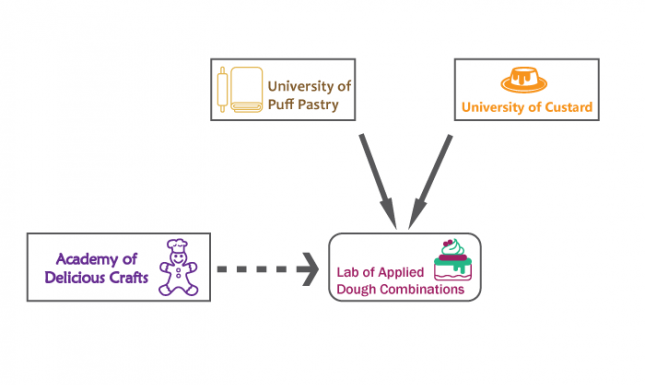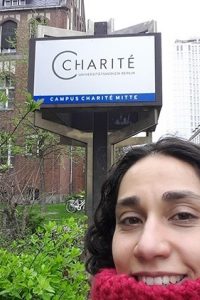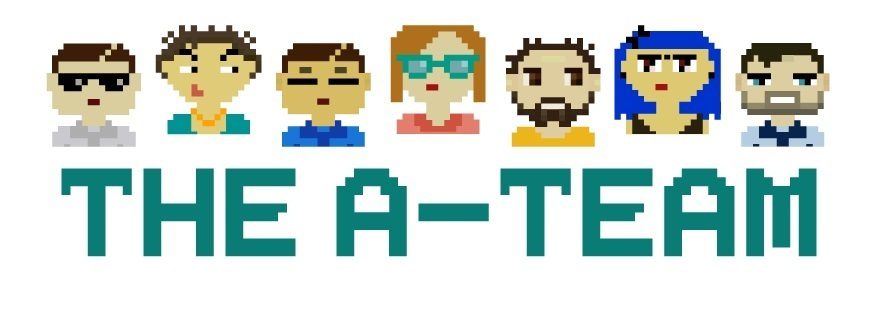A-TEAM: A stands for a very challenging job
As the A-TEAM, we thoroughly evaluate the data we collect, and aim to provide a consistent and transparent curation. What we do could also be described as that of a detective/archeologist/archivist: through bits and pieces of data we seek to unravel the scientific landscape.
“What do you do for work?” is a common conversation starter at social gatherings. For doctors or teachers, this is easier to answer, but for members of the A-TEAM this is a question that requires a lengthy explanation. The short answer would be that we unify organizations in a database, but this does not cover all our work. To unify an organization, we need to recognize which type of organization it is and what kind of relationships it has with other organizations. Then, of course, we must explain what unification means in our context. In short, we are busy with ontologies.
Maybe giving an example would help explain what we do. Our job is not always like a fairy tale, but sometimes it can get equally unreal.
Unravelling the higher education, research system, and funding resources
Once upon a time there was a higher education institution called the University of Ensaïmada. First, we look at what project requires us to enter this organization into our database as each project has its own criteria when it comes to the number of publications to be used as a minimum threshold. Sometimes we must check other criteria such as the education programs they offer or demographic implications they may have on other organizations in our database. As the University of Ensaïmada fits our criteria, we decide to include it in our organization list. To give a few examples, this involves assigning it a unique ID and collecting relevant information such as location geocodes, up-to-date webpages, foundation years, mergers, persistent IDs if any, and connections to other databases/projects.
A next step is to check all the name variations there may be for the organization. This step is also known as unification. For example, when research is published by a scientist working at the University of Ensaïmada, the name of the university can appear as Univ Ensaïmada, Ensaïmada Univ, Univ Ensai Mada, Ensaimad Uni, as well as with spelling mistakes as in Univ Ensamiada. The A-TEAM is extremely careful on this unification step and we are proud of our results. This data is then linked to the entity on the CWTS publication database as identified with a CWTS ID.
Sometimes organizations change their names, they are split into different organizations, or they merge with others to form even larger organizations. As researchers should be able to follow publication data alongside these changes, the A-TEAM makes sure they are recorded within our database. As a principle we unify in such a way that disaggregation is always possible. For example, in 2017 University of Ensaïmada merged with University of Profiterole, yet this new organization kept the name of University of Ensaïmada. In this case our database would have three entries: one per university before the merger, and one for the new university. Thanks to this transparent approach, researchers can track such developments.
Relationships that contribute to delicious research
One of the most challenging parts of describing an organization concerns its relationships to others. This is necessary to understand how the research and higher education system works in the land of Pâtisseria. Science requires extensive collaboration as researchers do not work alone in isolation. To better understand the dynamics between organizations we also classify its relationships to others.
For example, the University of Custard specializes in cream while the University of Puff Pastry specializes in layered dough. Together they have set up the lab of Applied Dough Combinations where research focuses on combinations of layered dough with cream, funded mostly by the Academy of Delicious Crafts. The research from this lab owes to these three organizations, and our mission is to codify these relationships so that researchers can understand how the research came to exist. In our database, these relationships are broadly defined as components (closely integrated) and associates (loosely affiliated).
Types of organizations that cater to the feast of research
Research in Pâtisseria does not only take place at universities. Some of it is carried out at hospitals, museums, research centres, and labs. However, not all hospitals and museums conduct research. Part of our task is to investigate what kind of organizations they are and how they interconnect in the wider research system. For example, the Museum of Baklava has a large collection of photos and documents but does not conduct research, as a contrast the Museum of Filo Pastry focuses heavily on research. Sometimes museums are both research and exhibition oriented as well. Sometimes these museums are standalone entities, but sometimes they are affiliated to research organizations or networks of museums, all of these are examined by the A-TEAM and entered into our database.
In Pâtisseria there are 20 hospitals and clinics. The largest one, University Hospital Briouat, not only provides healthcare but produces a large amount of papers per year. It also collaborates with the University of Puff Pastry and with the Pastry Health Institute. With the former, it provides core curriculum education to medicine students as the faculty is located at the hospital and conducts research, while with the latter it has two research laboratories.
Based on its characteristics as a healthcare provider and education/research centre, University Hospital Briouat could be classified as a hospital, a university, or a research centre. It could also be classified as a faculty of the university, but we would miss integrating its other functions. In general, we identify organizations by its core activity and identify the other functions through relationships. In this case, Briouat is classified as a hospital. To signal its close relationship with the university, we mark it as a component. The relationship with the Pastry Health Institute is less tight according to our criteria and thus we mark them as associates.
This example is relatively straightforward and sometimes such relationships can be quite puzzling and intricate. Some hospitals can work with various universities or only collaborate for special trainings, while some universities place their students for trainings in 10 different hospitals. Our task is to investigate and establish how close or loose these various relationships can be. Only then can other researchers use our data for future research.
Who is funding the research behind a publication?
During the last years the Ministry for Healthy Bakery, the Foundation for Sweet Life or the Academy of Delicious Crafts are financing the research published in Pâtisseria, and the researchers mention them or the grants they receive in the funding acknowledgment section of the publication. In the same way as for the affiliated organizations in a paper, the role of the A-TEAM here is to check name variations, change of names, relationships among organizations, and type of funding organizations.

OK, it is deliciously complicated but what is this good for?
The information we collect is stored in a database that scientists use in order to research various aspects of the science system. However, our most famous output can be seen in the Leiden Ranking of Universities. You can see an example of how our data is and should be used here and read more about the responsible use principles we uphold in the Leiden Manifesto.

Our work involves careful evaluations and thorough reviews of the information we collect. By checking that all the data about an entity is accurate, we make sure that the information is accessible and current. After all, a database is only beneficial when the data it contains has been properly curated with consistent and transparent methods. Otherwise, what you get is a large heap of meaningless data which can only serve as the basis for faulty studies. A recent example of this is the inaccurate database from Surgisphere which was used in a now-retracted paper about HydroxyChloroquine.
The challenges of our work are that although much of the information for each organization should be public, accessing such information is rarely straightforward. Most countries lack an overview of scientific collaborations, websites are not kept up to date, and organizations might disappear without a trace. We just keep on drinking more and more coffee on such days. We also enjoy seeing the actual buildings of the organizations we spend hours understanding, which happens quite randomly when we are on work trips. We are, in short, proud of and excited about what we do at CWTS every day!

What the A-TEAM does could also be described as that of a detective/archeologist/archivist: through bits and pieces of information we seek to unravel the scientific landscape. As such, only very patient and conscientious individuals are fit for it. A-TEAM members also do engage on research tasks of their own, which brings more insights into our database-related tasks. The current team is formed by Clara Calero Medina, Martijn Visser, Andrea Reyes Elizondo, Jeroen van Honk, Zeynep Anli, Tobias Nosten, Dan Gibson, and our visiting member Carey Ming-Li Chen. However, our database would not be what it is without the work from our dear former team members: Maia Francisco Borruel and Sonia Mena Jara.
The A in A-TEAM stands for many aspects of our job: Address, Acknowledgement, Affiliations... In the end, we put everything together as a team and hopefully provide a delicious result!





0 Comments
Add a comment